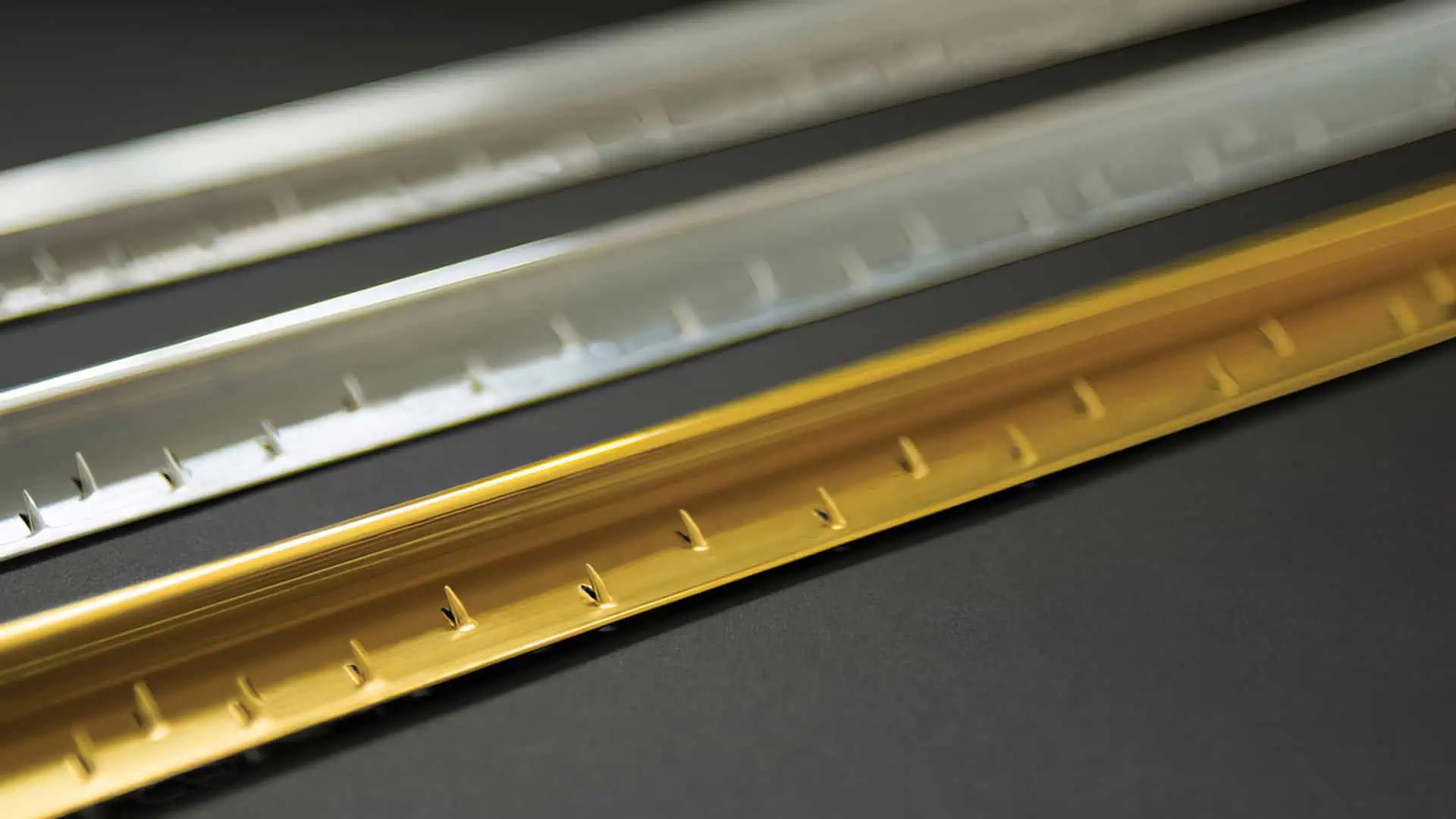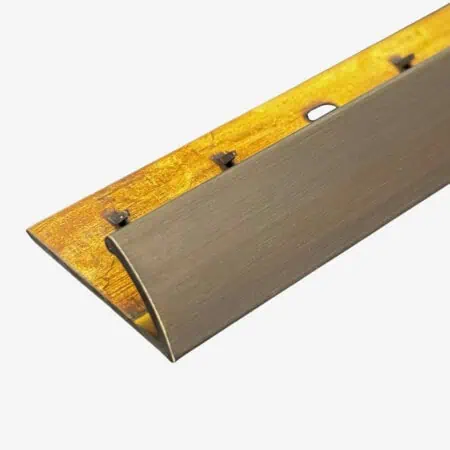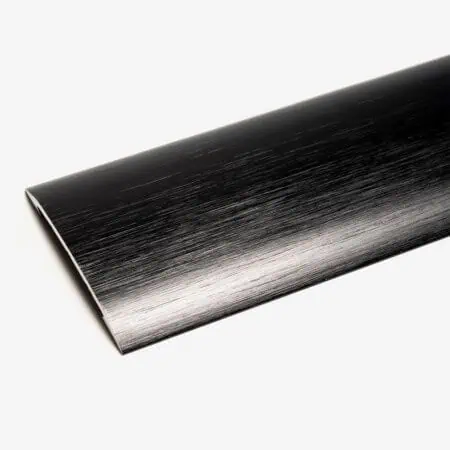Threshold strips connect rooms, protect flooring and provide smooth transitions between surfaces. Whether you’re laying new flooring or dealing with height variances between spaces, the right threshold will make all the difference.
In this guide, we’ll explain everything you need to know about door threshold strips to help you make the best choices for your home.
In this guide
What are threshold strips/door bars?

Threshold strips (AKA door bars) are slim strips fitted at the base of doorways to bridge the gap between different floor surfaces or levels.
Although they may seem like a minor detail, a threshold strip plays a big part in giving your home that professional finish. But that’s not all they do…
The benefits of door bars
They add to your home décor
Door bars aren’t just functional; they double up as a design feature. Available in a range of materials and finishes – whether you’re a minimalist or more traditional – there’s a threshold strip to suit every colour scheme and style.
They connect all flooring types
Door bars create a seamless transition between flooring, whether carpet, laminate, LVT, tiles or engineered wood.
Some options are specifically designed to join two completely different types of flooring (more on this later), allowing you to mix up floor coverings throughout your home without them appearing disjointed.
They even out your flooring
Door bars can bridge height differences between flooring types. Whether moving from carpet to tile or laminate to hardwood, a threshold ensures a smooth transition, eliminating trip hazards and giving your floors a high-end feel.
They protect your flooring
Threshold bars cover the edges of the flooring (where they both meet), which protects them from wear and tear.
They can keep your home dry
Door bars are great for keeping moisture out and preventing water damage, especially on external doors. They create a barrier that seals the gap between the door and the floor, preventing rain, damp or condensation from seeping inside.
For added moisture protection, some thresholds come with weatherproof seals or are designed specifically for exterior use.
They keep the heat in and bugs out
Properly installed door thresholds can help seal gaps between floors and doors, preventing drafts. This allows your home to retain more heat, potentially lowering your energy bills.
Some bars come with rubber or brush seals that create an extra barrier to stop insects and debris from getting into your home – doubling up on pest protection and keeping your house clean.
Key types of door threshold strips
There are various thresholds and door bars on the market, each designed for different flooring types and heights. They’re also available in a variety of materials (including metal, plastic, PVC, wood and rubber).
Here’s a breakdown of the most popular options and what they’re best for, to help you work out what you need:
Double / dual-edge door bars

Function: Connect carpet to carpet
Designed to: Stop the carpet edges from fraying
Materials: Usually made from metal (aluminium, brass) or plastic
Single-edge door bars
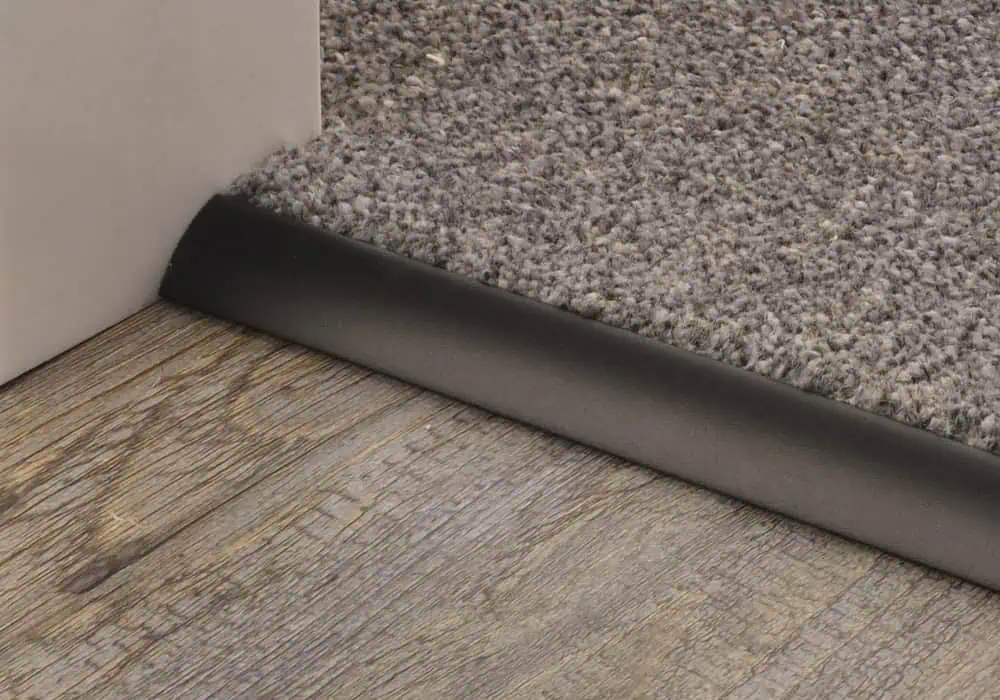
Function: Connect carpet to hard surfaces (vinyl, tiles, wood, etc.). They also create a neat finish at entrance ways.
Designed to: Securely anchor carpet edges, prevent fraying and minimise wear
Materials: Typically made from metal or durable plastics
Cover strips

Function: Join nearly any type of flooring of equal height (wood to tile, laminate to vinyl, LVT to laminate, etc.)
Designed to: Conceal gaps between floorings, prevent dirt buildup and create a tidy finish
Materials: Made from metal, wood or PVC
Z edge / Zig-Zag door bars

Function: Connect carpet and hard flooring (laminate, LVT, tile, wood, vinyl, etc.)
Designed to: Provide a neat transition without exposing edges
Materials: Metal or durable plastic
Ramp-edge door bars
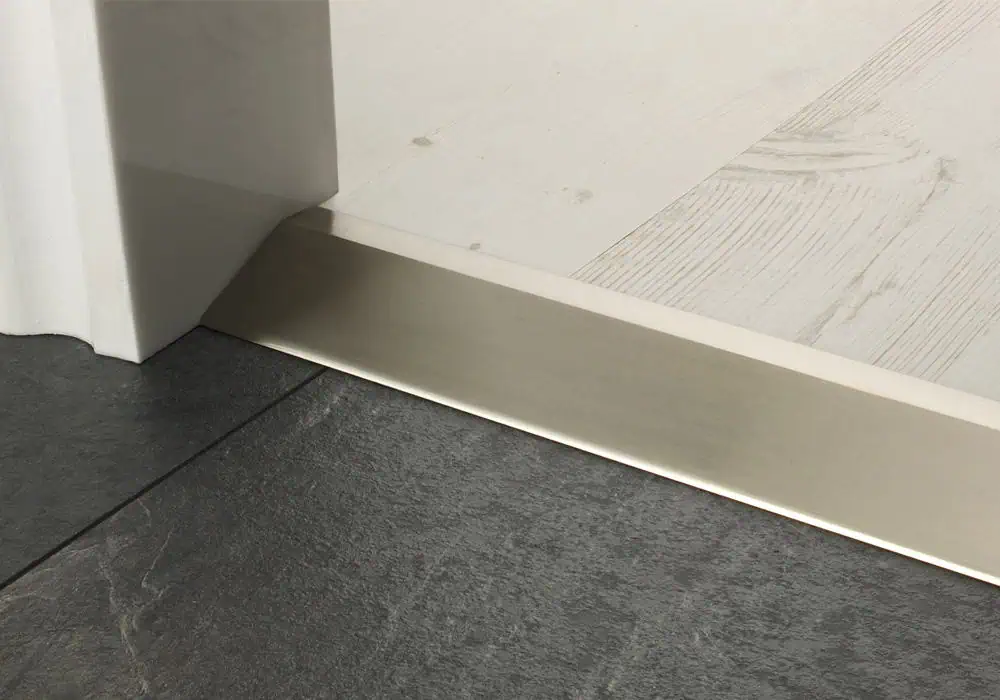
Function: Bridge gaps between floors of different heights
Designed to: Provide a smooth transition and reduce tripping hazards
Materials: Available in rubber, wood or metal
T-Bars
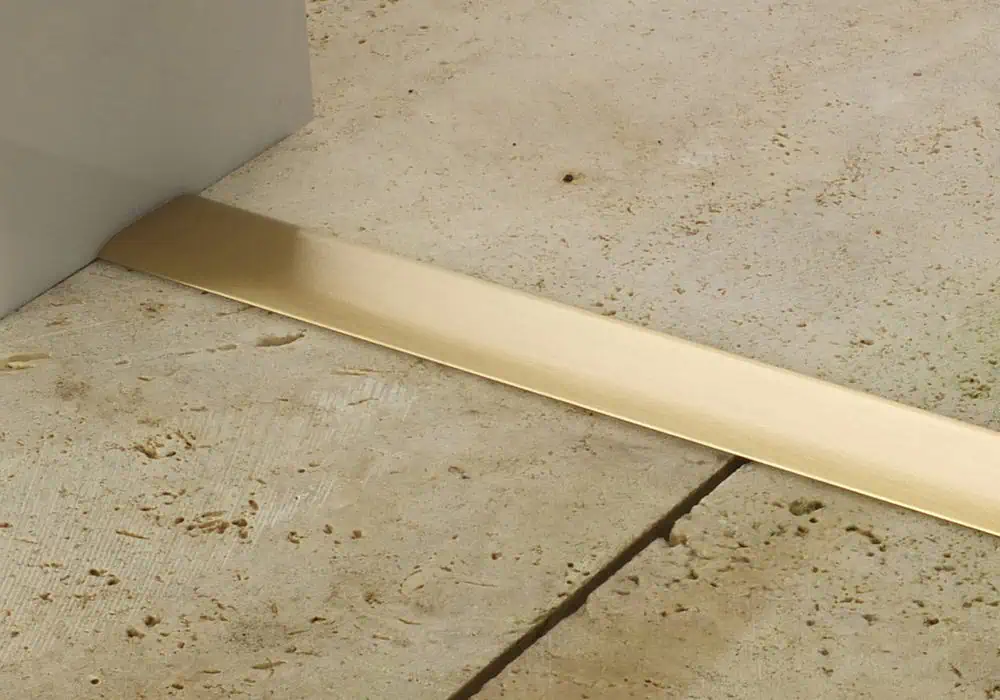
Function: Connect similar-height hard flooring (e.g. laminate to laminate or wood to tile)
Designed to: Fit snugly into gaps between the two surfaces for a flush, seamless look
Materials: Commonly made from metal or wood
Choosing the right door bar for you

Here are the key things to think about when shopping for door thresholds and bars:
- Durability. Metal door bars are more resilient than plastic or PVC options – so make sure you choose the right product for your space. For example, while PVC is flexible and easy to work with, it makes sense to choose sturdy aluminium for a high-traffic area.
- Budget. Prices vary depending on quality and style, and as with most things, you get what you pay for. Investing in bars that’ll last as long as your flooring is more cost-effective than choosing cheaper ones that need replacing prematurely. This is even more important when dealing with a carpet transition, where it needs stretching onto the door bar and is not easy to refit.
- Colour and finish. The colour and finish of your door bars will depend on the aesthetic you’re going for and whether you want them to blend in or stand out. To make them look like part of the furniture, choose thresholds that match your flooring (like a wood effect bar for a wood floor). If you want them to stand out, choose a finish that creates more contrast (like a brushed pewter bar against dark flooring).
- Installation. Most door bars are DIY-friendly, but you might need an expert to help with flooring expansion or level differences.
- Width and length. Measure your doorway carefully to ensure the threshold fits properly – if it’s too short, it won’t cover the gap, and if it’s too wide, it could be a trip hazard and will be seen when the door is closed.
A seamless transition
When it comes to door thresholds and bars, these essential tips can make all the difference in achieving a successful installation:
- Don’t end up buying twice. Always take precise measurements before buying your door bars to avoid costly installation mistakes.
- Prioritise safety. A well-fitted, flush threshold reduces the risk of tripping. Opt for ramps in areas where the floor height differs.
- Moisture matters. In damp-prone areas like kitchens and bathrooms, choose a waterproof threshold to prevent damage over time.
Now that you understand the purpose and benefits of door thresholds and bars, you should feel confident choosing the right type, material and style for your space.
If you need further clarification or have any questions, our customer service team will be happy to help. Email us on contact@simplyunderlay.co.uk and we will give you our expert recommendation.

